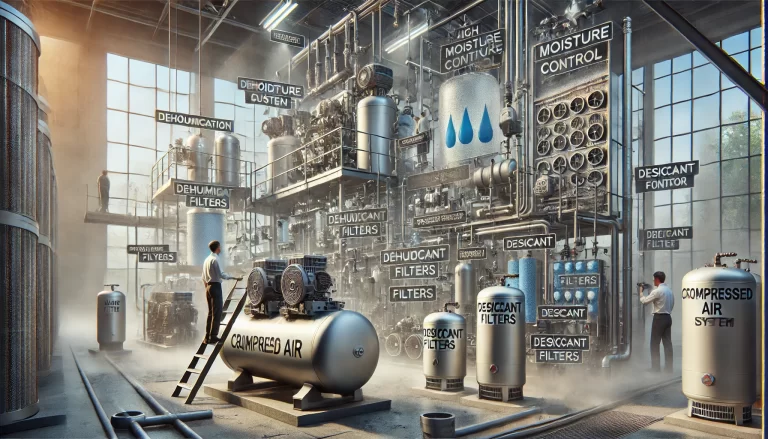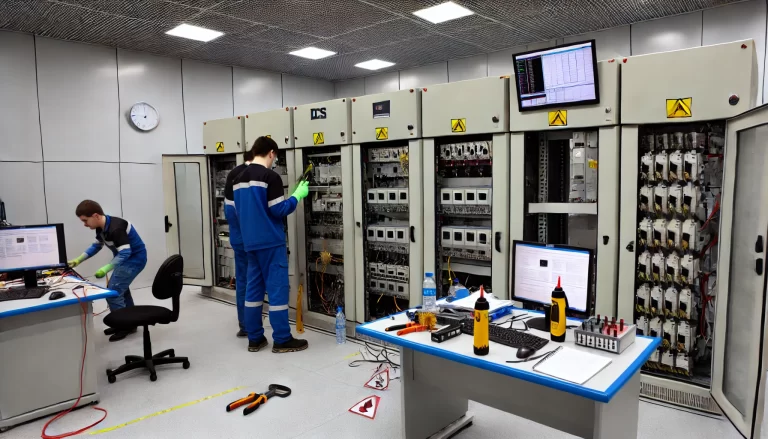Performing effective instrument equipment maintenance during plant shutdowns is critical for ensuring safe and efficient operations. Below is a comprehensive guide outlining key considerations and best practices for instrument technicians during shutdown maintenance and subsequent equipment startup.

1. Preparation Before Shutdown Maintenance
Understand the Maintenance Schedule:
- Coordinate with the operations team to understand the shutdown timeline and the maintenance schedule for process equipment.
- Develop a detailed plan for instrument equipment maintenance, aligning it with the overall plant maintenance plan.
Prepare Required Materials:
- Ensure all necessary tools, spare parts, and consumables are available. This includes seals, gaskets, calibration tools, and cleaning materials.

2. Key Considerations During Instrument Maintenance
Ensure Safety Before Dismantling Instruments:
- Confirm that all media inside process equipment have been drained, and any residual pressure has been fully released.
- Always work under proper permits and with the relevant safety measures in place.
Dismantling Pressure Instruments:
- Loosen mounting bolts gradually to avoid sudden release of pressure.
- For toxic gases or hazardous fluids, wear appropriate personal protective equipment (PPE), such as gas masks, and work upwind for additional safety.
Handling Special Instruments:
- When dismantling differential pressure devices like orifice plates, note their orientation to prevent installation errors later.
- Inspect straight pipe sections for alignment and cleanliness, ensuring no blockages or debris.
Label and Organize Instruments:
- Clearly label dismantled instruments with their unique identification numbers.
- Store them systematically to prevent mix-ups during reinstallation, particularly for instruments with different calibration ranges.

3. Best Practices for Equipment Startup
Instrument technicians play a pivotal role during plant startup. Their work quality directly impacts operational efficiency. Follow these guidelines for a successful startup:
Coordinate with Process Teams:
- Ensure instrument installation does not delay process equipment startup.
- Collaborate closely with operations to meet pipe pressure testing and leak-checking timelines.
Perform Thorough Air System Cleaning:
- Purge air supply lines to remove contaminants such as rust, moisture, or silicon dust from air-drying systems.
- Clean primary and secondary air supply filters in pneumatic devices, ensuring all valves and actuators are free of obstructions.
Install Throttling Devices Correctly:
- Verify the orientation and alignment of devices like orifice plates, Venturi tubes, and V-cones.
- Clean and polish pipe walls if necessary to ensure smooth airflow and accurate measurements.
Proper Calibration and Adjustment:
- Adjust differential pressure transmitters with correct filling fluids in negative pressure connection lines.
- Refill pressure and isolation tanks with compatible fluids to maintain accurate readings.
Verify Instrument Connection and Operation:
- Check thermocouple polarities to prevent reverse connections.
- Ensure proper wiring and calibration of resistance thermometers and temperature transmitters.

4. Conduct Comprehensive System Tests
Instrument Calibration:
- Perform loop checks to verify the consistency between primary field devices and secondary control instruments.
- Ensure DCS (Distributed Control Systems) outputs match field device feedback for seamless communication.
Safety Interlocks and Protections:
- Test safety interlocks under simulated conditions to verify reliability.
- Switch critical instruments to “auto” or “lock-in” mode only after confirming normal operation.
Startup Flow Meters with Care:
- Open bypass valves first to flush the system, then gradually engage flow meters to avoid clogging by debris.
- Adjust valve sequences to protect sensitive equipment from abrupt pressure changes.
5. Common Pitfalls to Avoid
Mixing Up Instruments: Misplaced or incorrectly installed instruments may cause significant operational delays.
Neglecting Cleanliness: Residual debris, such as welding slag or rust, in pipelines can block instruments and damage sensitive components.
Skipping Alignment Checks: Improper alignment of throttling devices or valves can lead to inaccurate measurements and operational inefficiencies.

Conclusion
Efficient and safe maintenance during shutdowns requires meticulous planning, disciplined execution, and close collaboration between instrument technicians and process teams. By following these detailed guidelines, instrument technicians can ensure high maintenance quality, smooth startups, and reliable operations.
Always prioritize safety, precision, and communication to uphold the standards of excellence in instrumentation work.
